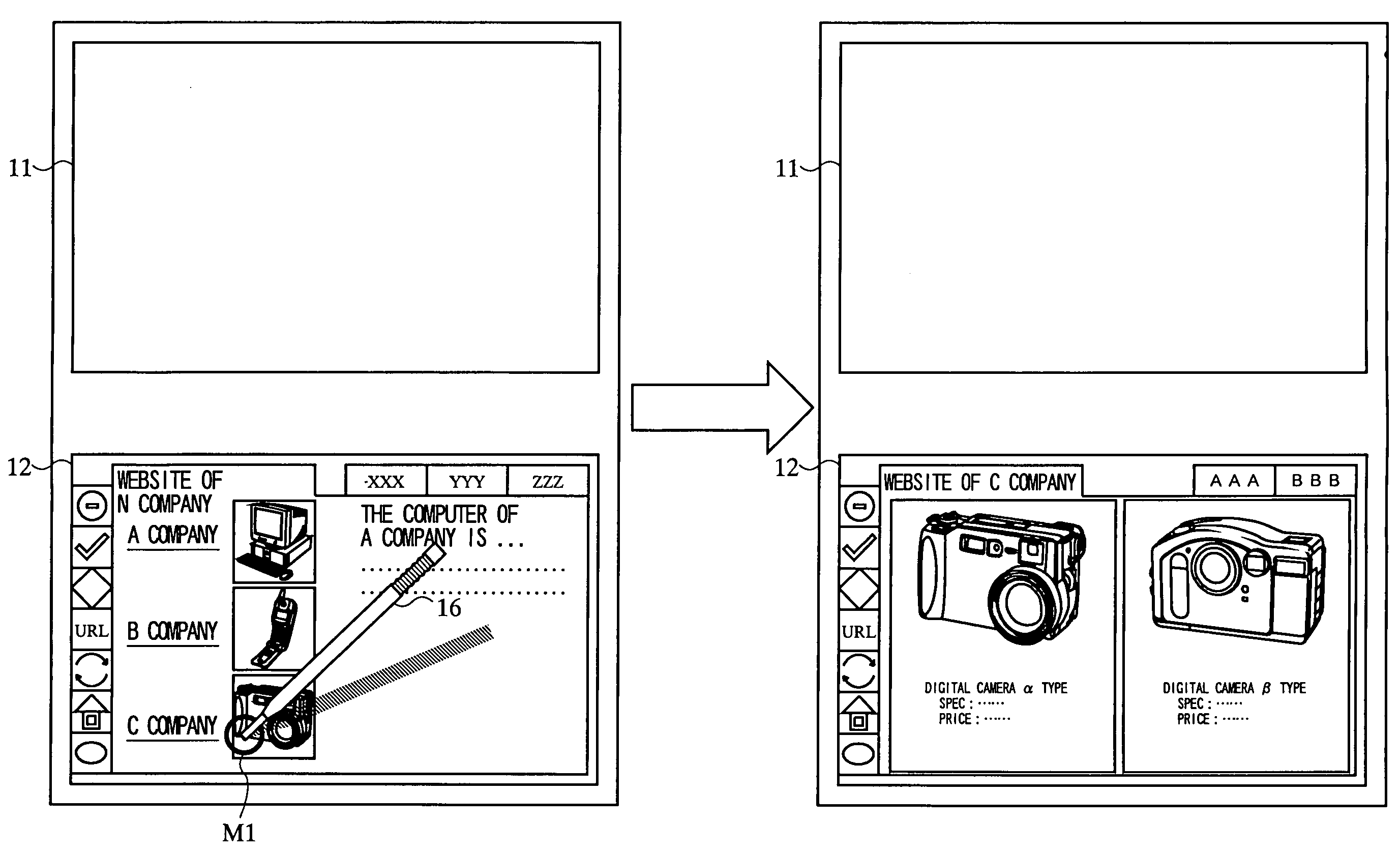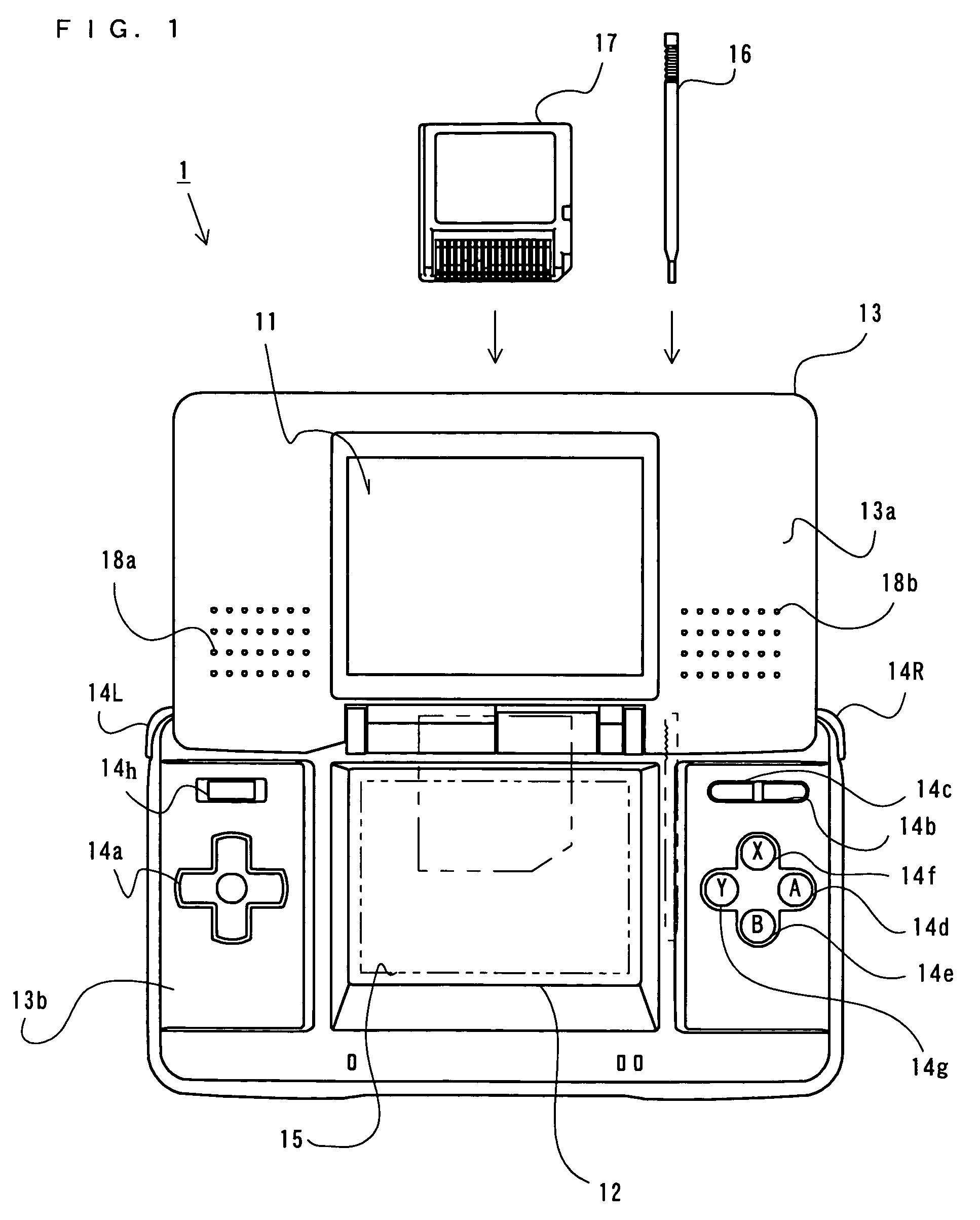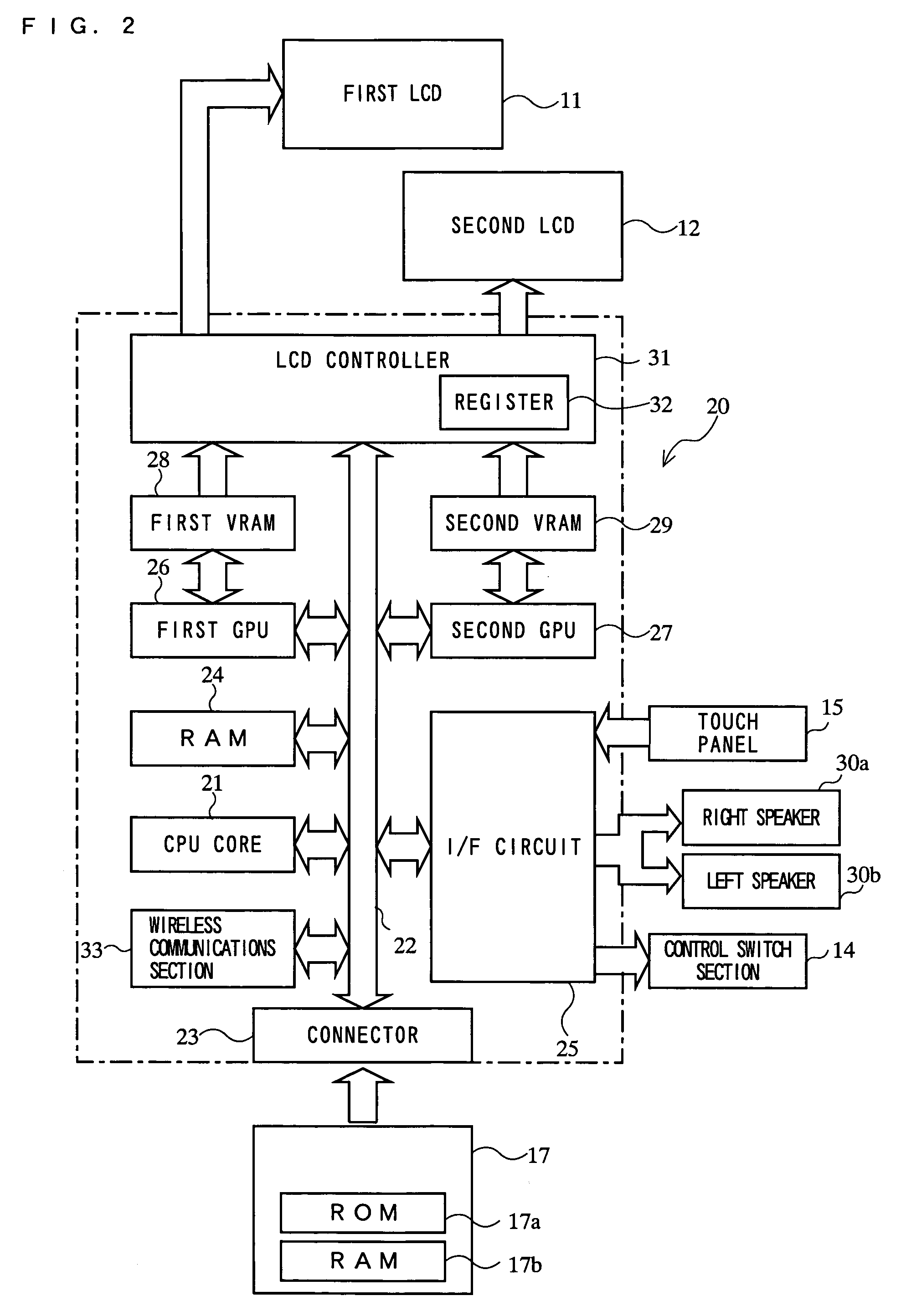Storage medium storing input position processing program, and input position processing device
a processing device and input position technology, applied in the field of storage medium storing an input position processing program and an input position processing device, can solve the problems of user making an inappropriate stroke, accumulating more unintended traces, and failing to perform the next operation intended by the user, so as to simplify the correction/cancellation of an inappropriate input trace and improve the usability of the position input method
- Summary
- Abstract
- Description
- Claims
- Application Information
AI Technical Summary
Benefits of technology
Problems solved by technology
Method used
Image
Examples
Embodiment Construction
[0070]An input position processing device capable of executing an input position processing program according to an example embodiment of the present invention will now be described with reference to the drawings. While the input position processing program of the example embodiment of the present invention can be executed under any computer system capable of displaying images on a display device, the following description is directed to an input position processing program being executed by a video game device 1 as an example of an information processing device (input position processing device). FIG. 1 generally shows the video game device 1 capable of executing the input position processing program of an example embodiment of the present invention. Although the type of the video game device is not limited to any particular type, the video game device 1 herein is a portable video game device.
[0071]Referring to FIG. 1, the video game device 1 includes a first LCD (Liquid Crystal Di...
PUM
 Login to View More
Login to View More Abstract
Description
Claims
Application Information
 Login to View More
Login to View More - R&D
- Intellectual Property
- Life Sciences
- Materials
- Tech Scout
- Unparalleled Data Quality
- Higher Quality Content
- 60% Fewer Hallucinations
Browse by: Latest US Patents, China's latest patents, Technical Efficacy Thesaurus, Application Domain, Technology Topic, Popular Technical Reports.
© 2025 PatSnap. All rights reserved.Legal|Privacy policy|Modern Slavery Act Transparency Statement|Sitemap|About US| Contact US: help@patsnap.com



